In November 2018 in the sale of Royal Jewels from the Bourbon Parma Family this 18th century natural pearl and diamond pendant from the personal collection of Marie-Antoinette realised the remarkable sum of $36.2m. One hundred pieces were offered in the auction of which ten had been owned by Marie-Antoinette, it was arguably one of the most important historic collections of royal jewels ever assembled. The pearl and diamond bow motif were worn suspended from Marie-Antoinette’s three strand pearl necklace (also sold in the auction) with the single stone diamond surmount forming the clasp of the necklace.
Treasure of an oyster: Tales of natural pearls | Part III
In our third instalment we consider three historic natural pearl jewels we have brought to auction
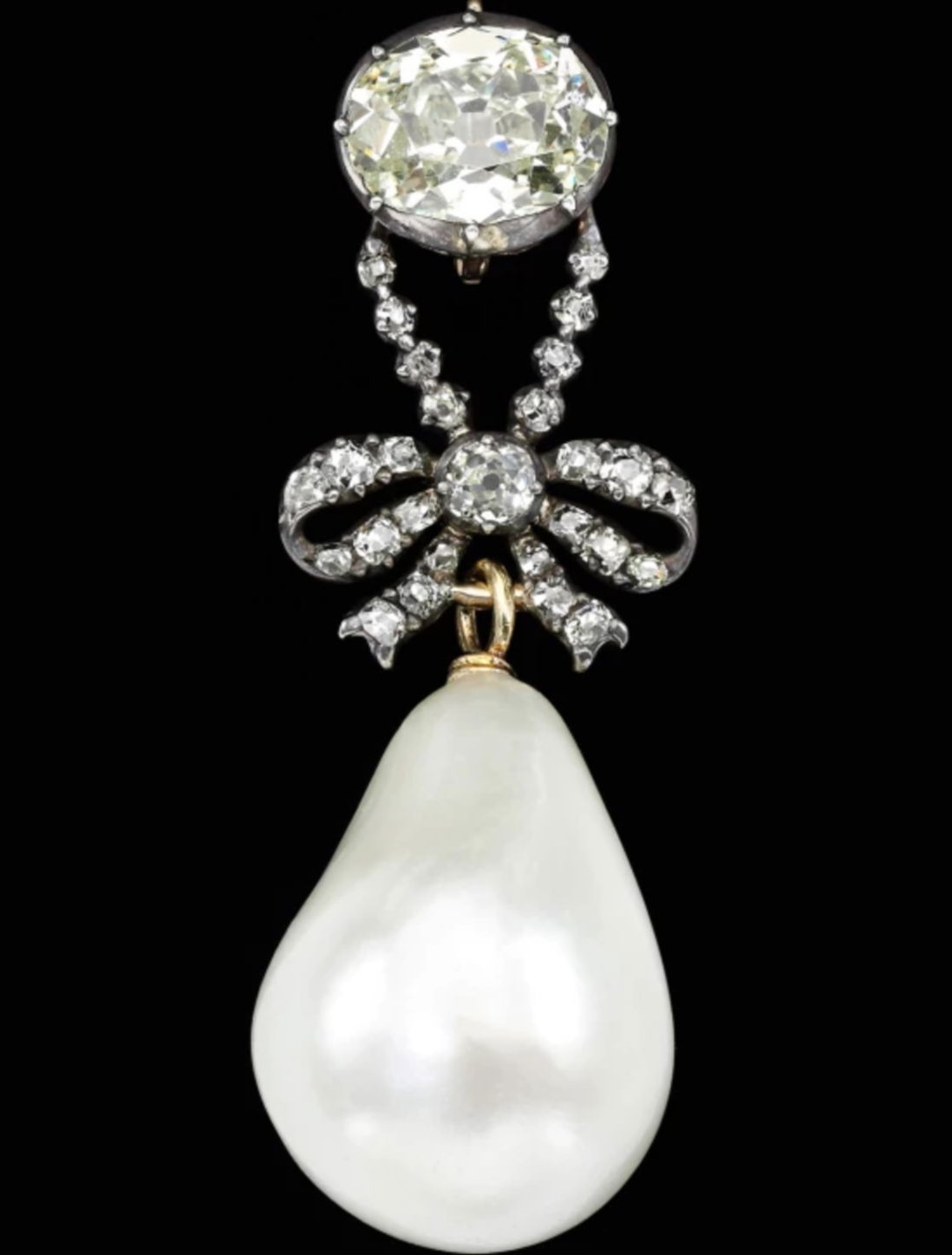
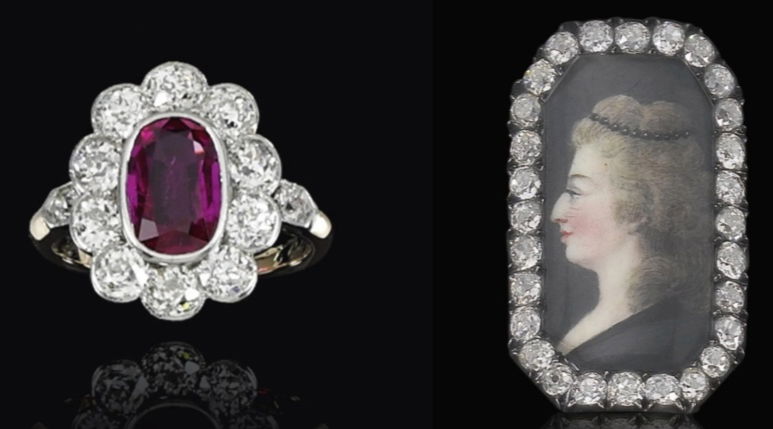
Both items were offered in the auction Royal Jewels from the Bourbon Parma Family
The jewels were described in the inventory created by Maria Anna of Austria, Princess Elie de Bourbon Parme (1882-1940) in 1932. Princess Elie was the daughter of Archduke Friedrich, Duke of Teschen and Princess Isabella of Croÿ and in May 1903 she married Prince Elias of Bourbon-Parma in Vienna. Maria Anna’s ruby and diamond engagement ring was also offered in the 2018 auction (lot 36) and in her inventory she identified it as, ‘…a ring set with a large ruby framed with diamonds. This is my engagement ring’. Maria Anna amassed the outstanding collection of jewels from the time of her wedding and later through the fortuitous combination of gifts and inheritances.
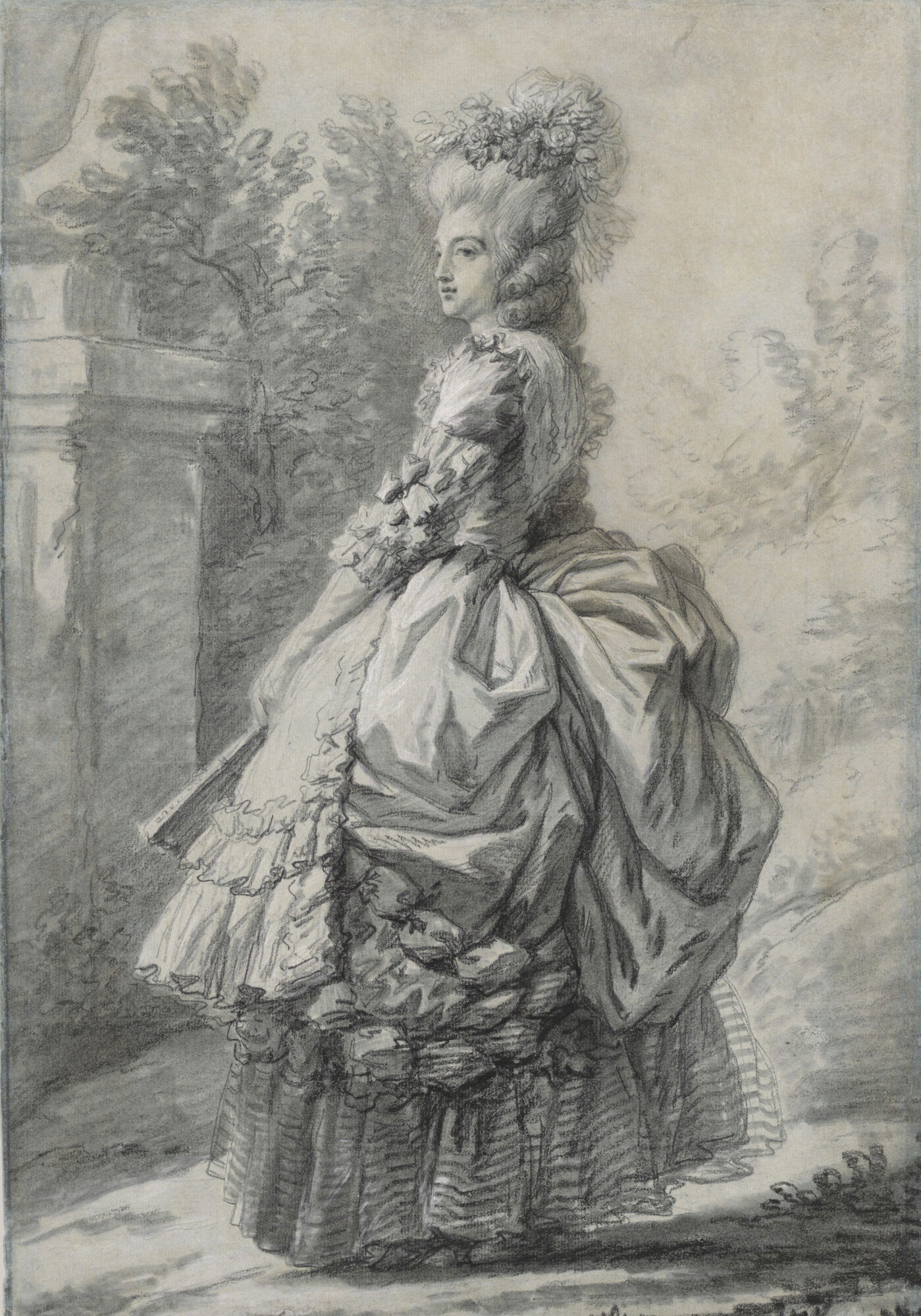
Marie-Antoinette’s own jewels had incredible adventures– in 1791 before she was taken into detention the Queen carefully wrapped her pearls, diamonds and rubies in cotton, placed them in a wooden chest and sent them to Brussels, where her sister Archduchess Marie-Christine was Governor. From there they were taken to Vienna, with the assistance of the diplomat Florimond Claude, Count of Mercy Argenteau, and into the safe keeping of the Austrian Emperor, Marie-Antoinette’s nephew. The jewels were restored to Marie Antoinette’s daughter, Madame Royale, following her release from the Temple Tower in 1795, where she had been held for three years; on her death in 1851 the jewels were then passed on within the Bourbon Parma family with whom they remained for the next 200 years.
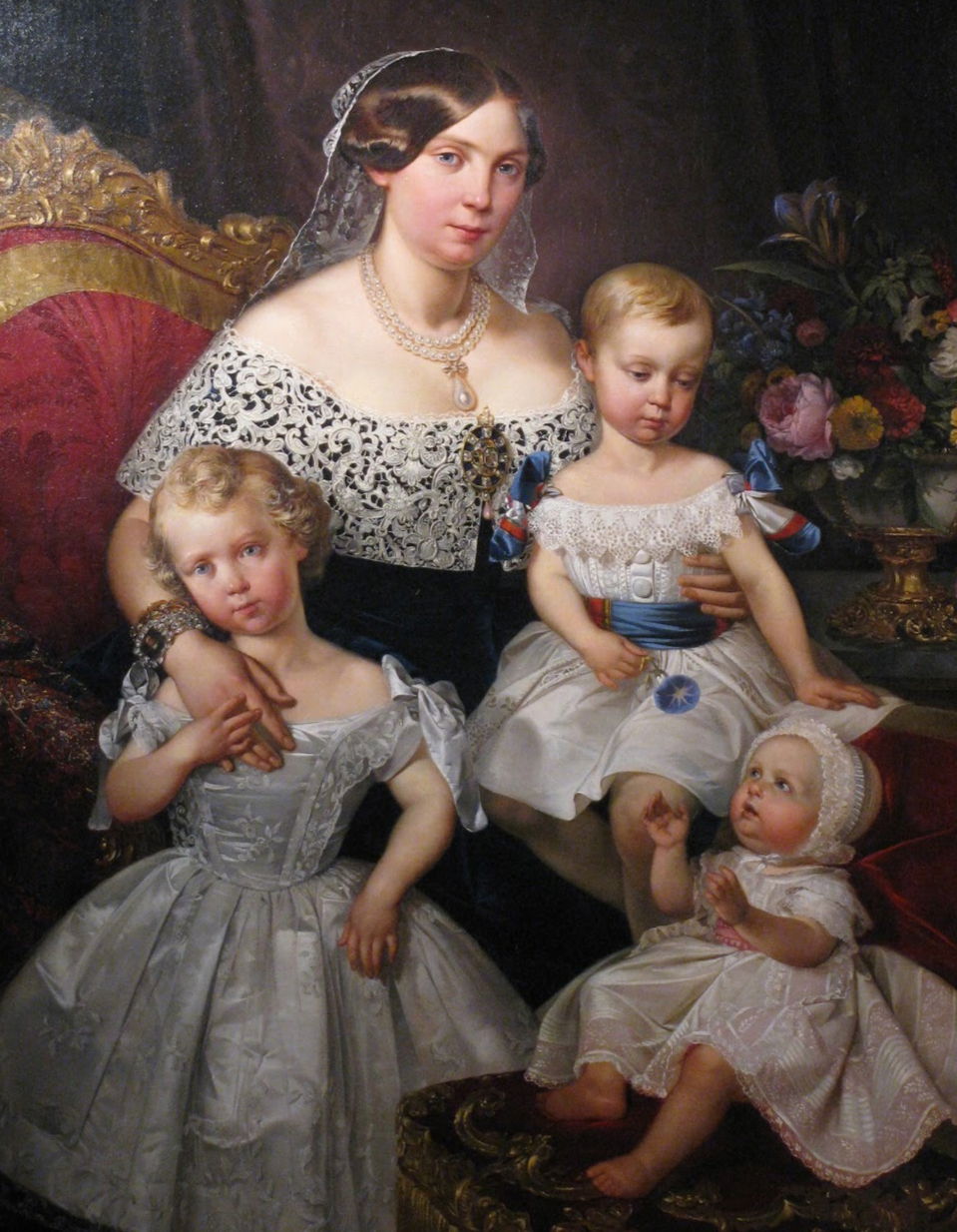
The pearl and diamond tiara created by Gabriel Lemonnier for Eugénie de Montijo, wife of Napoleon III, has witnessed less precarious albeit signficant historical events. Lemonnier’s sapphire and emerald parures for Isabella II, Queen of Spain, had been much admired in the Great Exhibition of 1851, and when Napoleon assumed the title of Emperor in 1852 Lemonnier was appointed crown jeweller. His imperial commissions invariably involved the re-setting of existing gems from the Trésor d’Etat, and were produced in a workshop paid for by Napoleon himself. Following the fall and later exile of Napoleon III, after the catastrophic Franco-Prussian War of 1870, Lemonnier’s firm went into swift decline and when he passed away twelve years later Lemonnier was in penury.
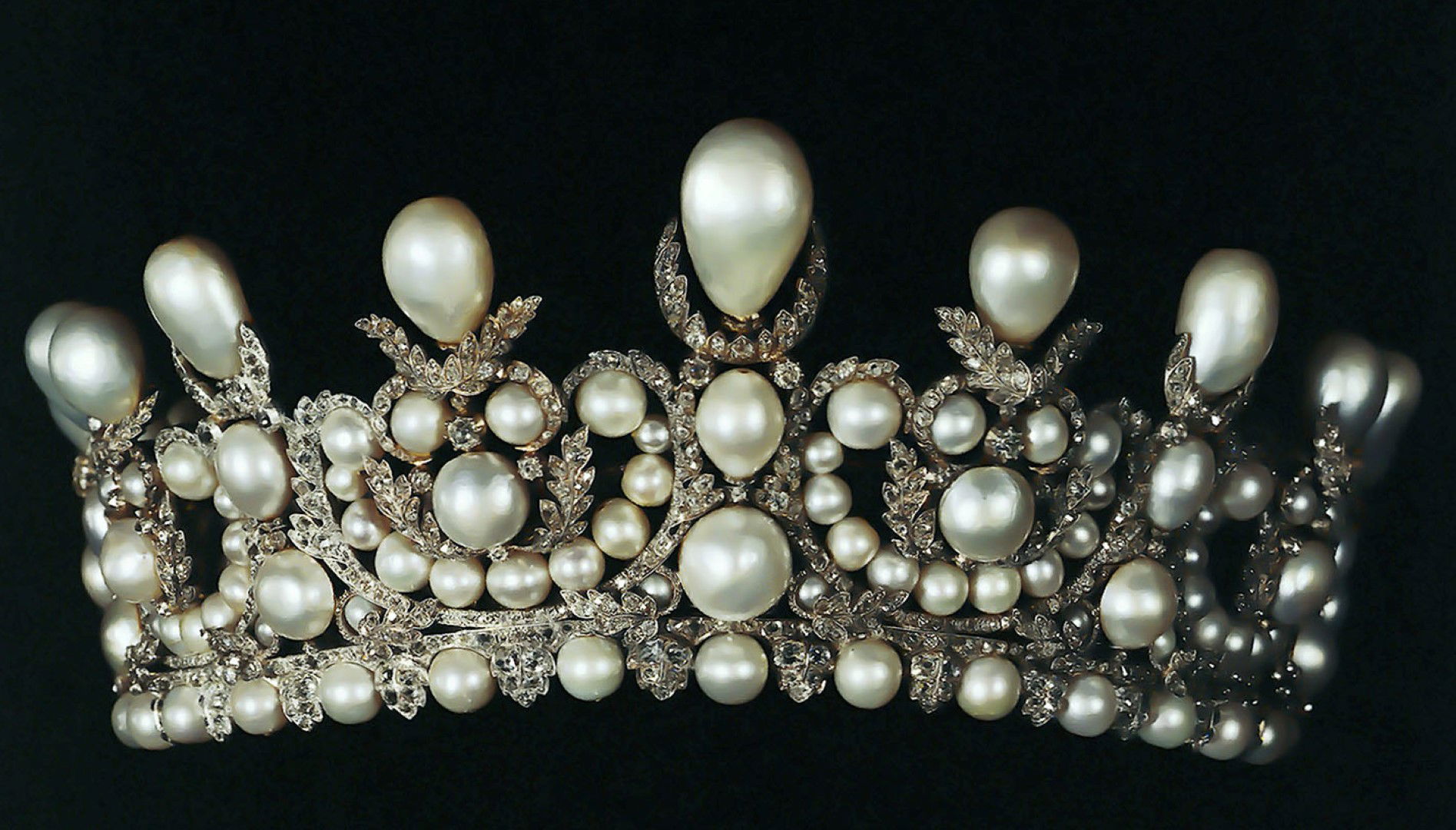
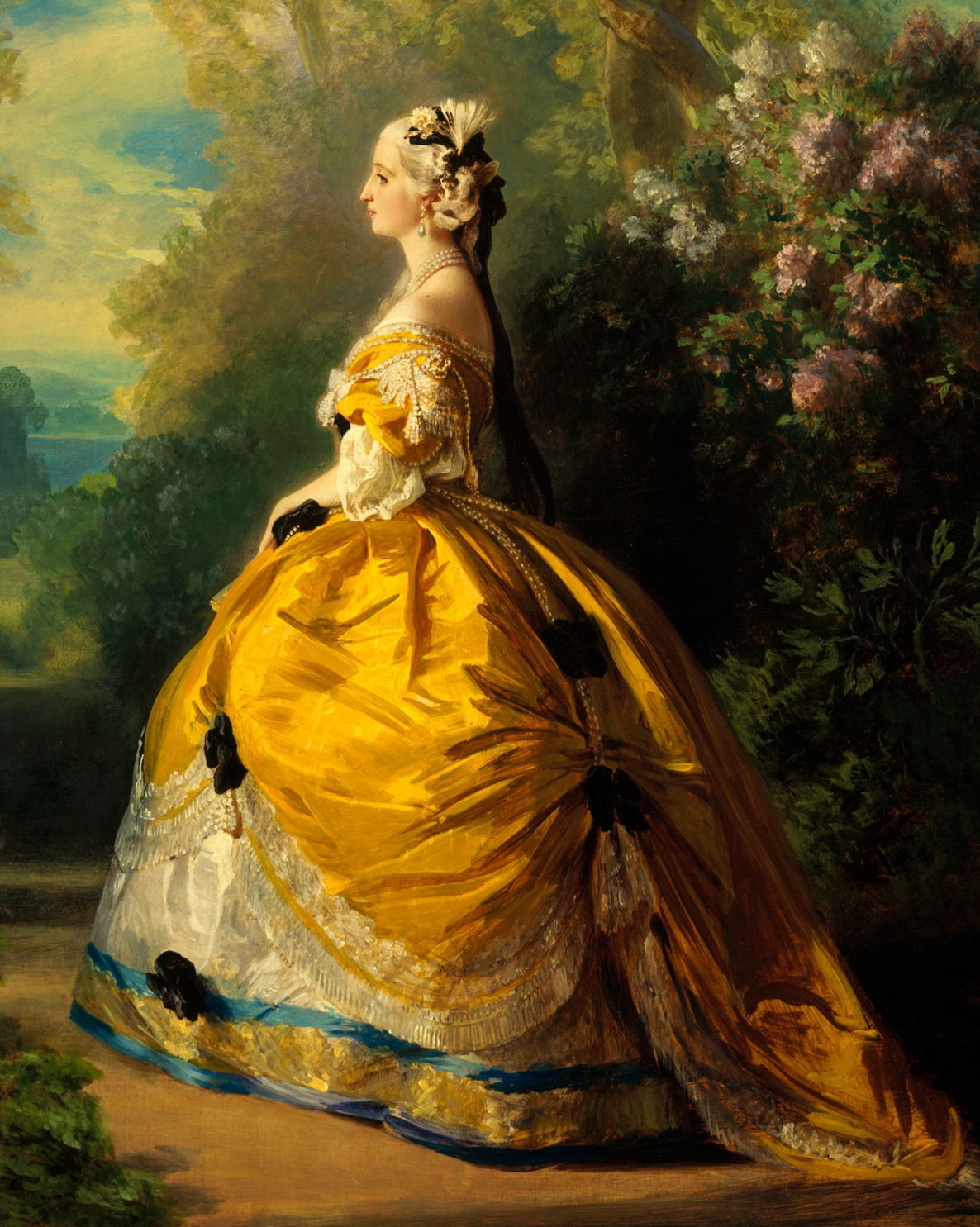
For Eugénie’s tiara Lemonnier utilised pearls from a parure created for Empress Marie-Louise, the second wife of Napoleon I and the great-niece of Marie-Antoinette. The tiara was part of a suite of jewellery Napoleon III ordered in anticipation of his marriage to Eugénie, which took place over two days in January 1853 – a civil ceremony held at the Tuileries followed by a grand service at Notre Dame. In his work of 1888, La Vente des Diamants de la Couronne, Arthur Bloche described the tiara as a ‘Bijoux du plus pur style Louis XVI’ – a jewel in the purest Louis XVI style. Jewellery created during the era of the Second Empire was invariably opulent, the demand for high value gems resulting in the extravagant style in which diamonds and pearls were generously displayed, and with less emphasis on the workmanship of the settings. Eugénie’s tiara is based on a neo-classical design interpreted in the Louis XVI style – the filigree silver-gilt mount is over crusted with small brilliant-cut diamonds, which emphasise and enhance the effect of the large, luxurious pearls.
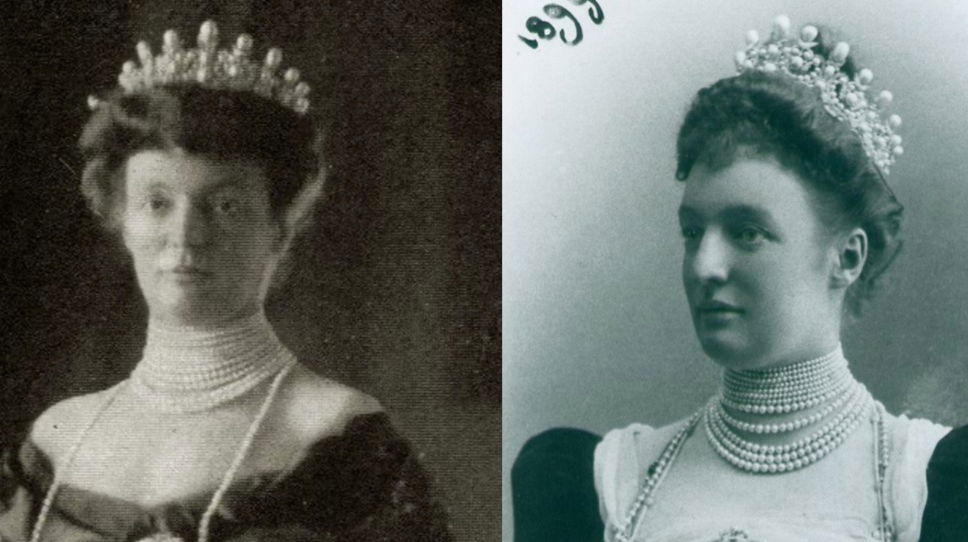
After the fall of Second Empire the French Crown jewels were exhibited at the Exposition Universelle held in Paris in 1878 and jewellery design to the end of the 19th century took inspiration from the pieces on display. The Crown Jewels were subsequently sold at a public auction held in Paris in 1887, they had been branded by the Third Republic as frivolous and it was argued that a secure democracy could do without these trinkets as it looked with confidence to a secure and stable future. The reality was that the regime had come to power with a slender victory and there was no shortage of claimants to the French throne – Bourbons, Orleanistes and Bonapartists could all legitimately have made a strong case to take the throne had they been able to generate sufficient monarchist momentum. The sale of the Jewels would therefore deal with these powerful symbols of monarchy and its mystique, although the path to the event was far from sure-footed – in response to negative feedback from some French jewellers a small number of jewels were retained by the state, but outrage was again stirred when the government decided to break up some of the jewels for them to be sold either as gems alone or in smaller groups.
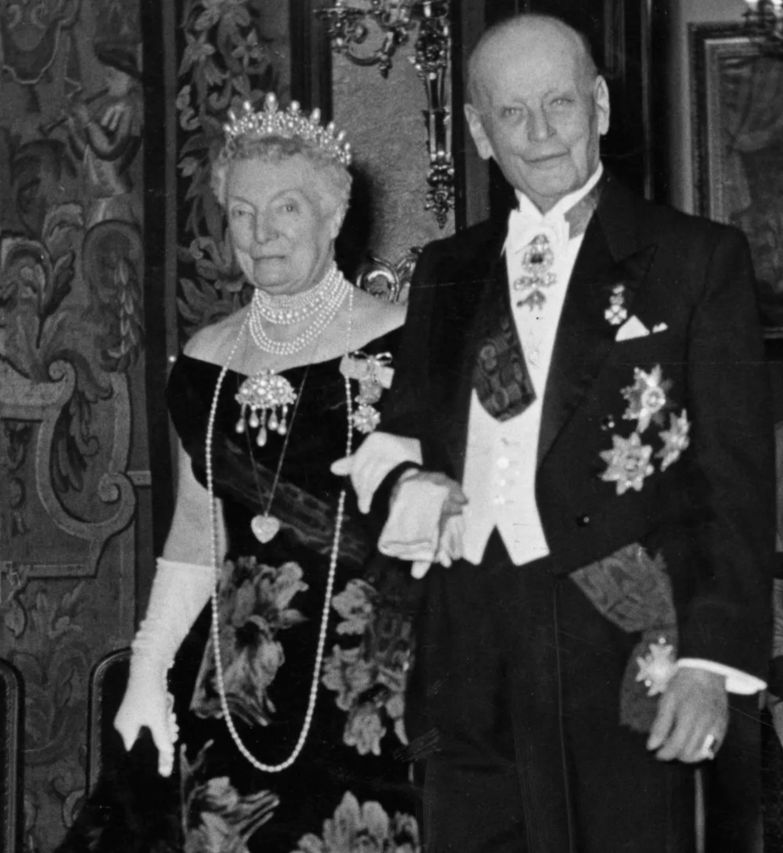
Eugénie’s tiara was not spared, and it was sold to Julius Jacobi in the nine session auction which took place in the state rooms of the Louvre. Three years later the tiara was acquired from Jacobi by Prince Albert von Thurn und Taxis. Albert turned twenty one in 1888 and became Head of the family of Thurn und Taxis, a role he possibly would not have imagined for himself as it was 0brought about by his older brother’s death at the age of twenty two. In 1889 he was made a Knight of the Order of the Golden Fleece, the ninth member of the family to be so honoured, and a year later he married Archduchess Margarethe Klementine in the chapel of Buda Castle, Hungary, with the service presided over by the Roman Catholic Primate of Hungary. Through her father Margarethe was a great-granddaughter of Leopold II, Holy Roman Emperor, and through her mother she was a great-granddaughter of Louis-Philippe d’Orléans, King of the French. Eugénie’s tiara was a wedding present for Margarethe from Albert.
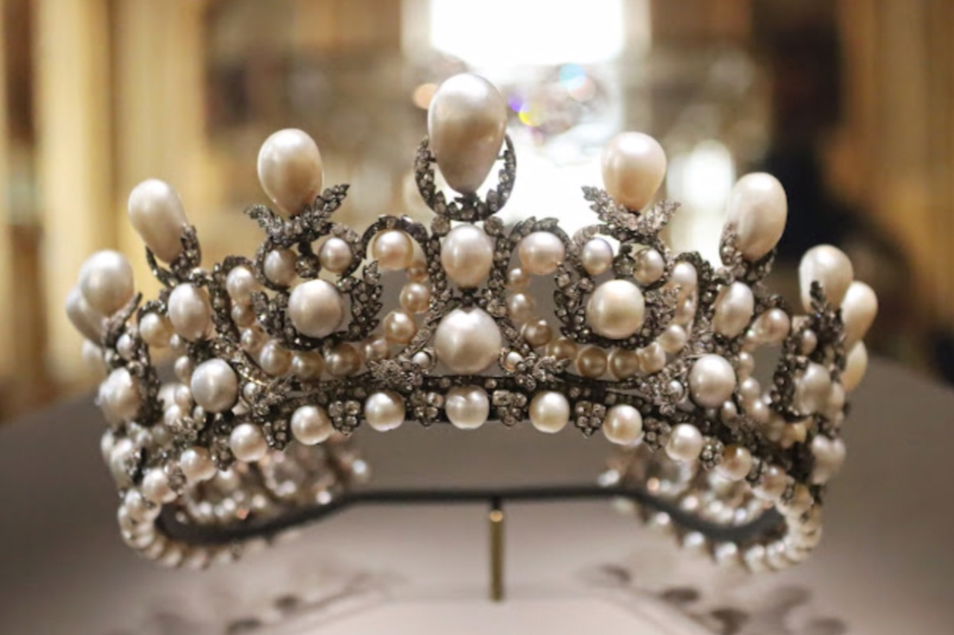
Ninety years later, in 1980, the tiara made its third (at least) appearance at a wedding when Prince Johannes von Thurn und Taxis married Countess Gloria Schoenburg-Glauchau, in Regensburg. Just ten years later in 1990, Johannes passed away and Gloria was forced to make some major decisions about the family’s assets, with one of the outcomes the auction, The Thurn und Taxis Collection, held in Geneva in November 1992. Lot 300 in the sale was Eugénie’s tiara, it was bought by the Friends of the Louvre and it now resides in the Galerie d’Apollon, in the Louvre, along with other Crown Jewel treasures saved from the 1887 auction.
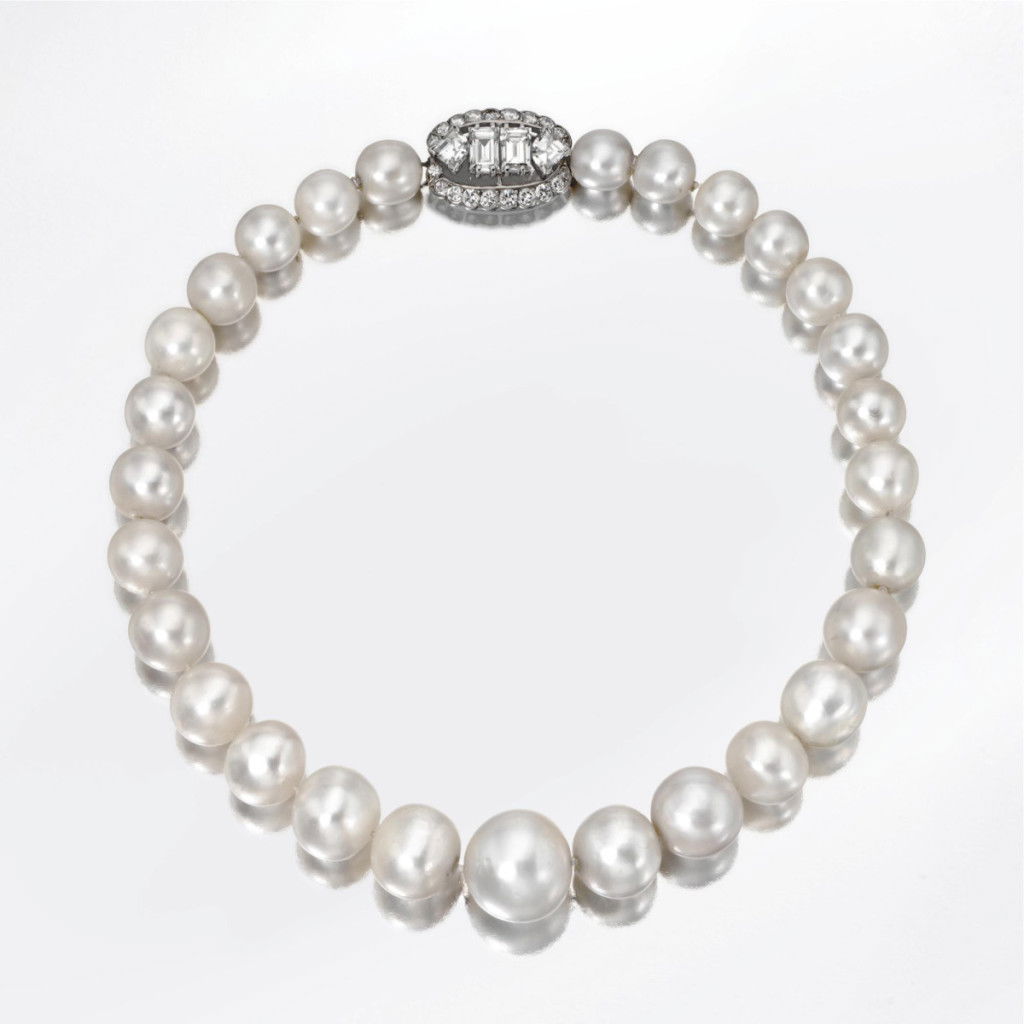
The 1987 auction, The Jewels of the Duchess of Windsor, set extremely high standards for the single owner sale genre: a world record sales total, spectacular jewels and a unique royal backstory, the details of which were revealed through inscriptions on the jewels. Many of the pieces in Wallis’s collection had been commissioned by the Duke of Windsor from the major Maisons specifically for the Duchess and the Duke played a significant role in formulating the designs and choosing the materials, but the single strand natural pearl and diamond necklace, lot 65, had been ordered by his father, George V, from Cartier as a gift for Queen Mary in 1926.
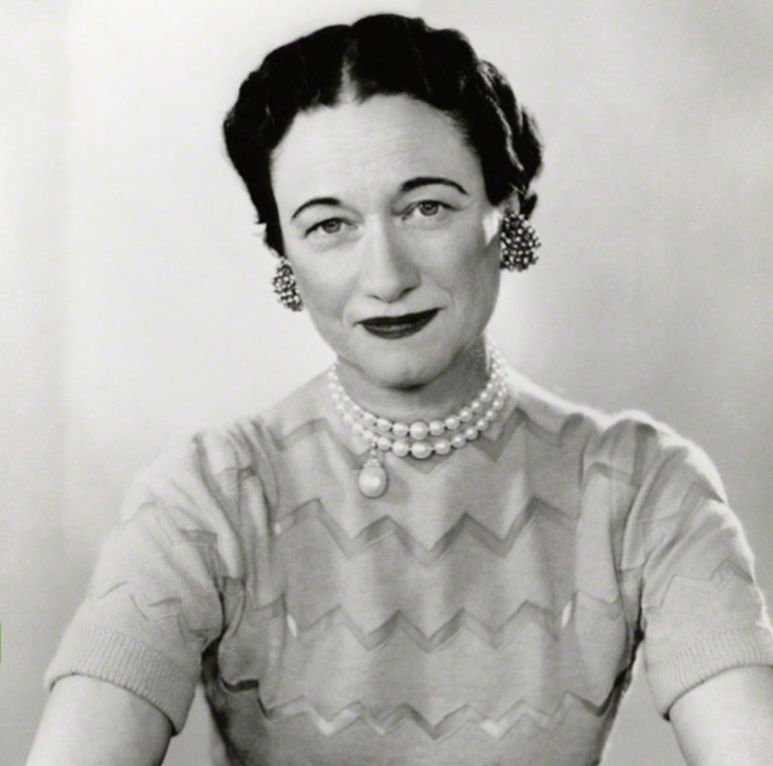
It was reported that contrary to her custom on the occasion of other family weddings, when Edward married Wallis in 1937 Mary did not give her daughter in law a wedding gift. By early 1952 it seems that her view might have softened a little when the Duke of Windsor was in England in February for the funeral of his brother, George VI. It appears that Mary might have given Edward the pearl necklace at this time as soon after, in May 1952, Wallis was clearly wearing the pearls in a series of Dorothy Wilding portraits.
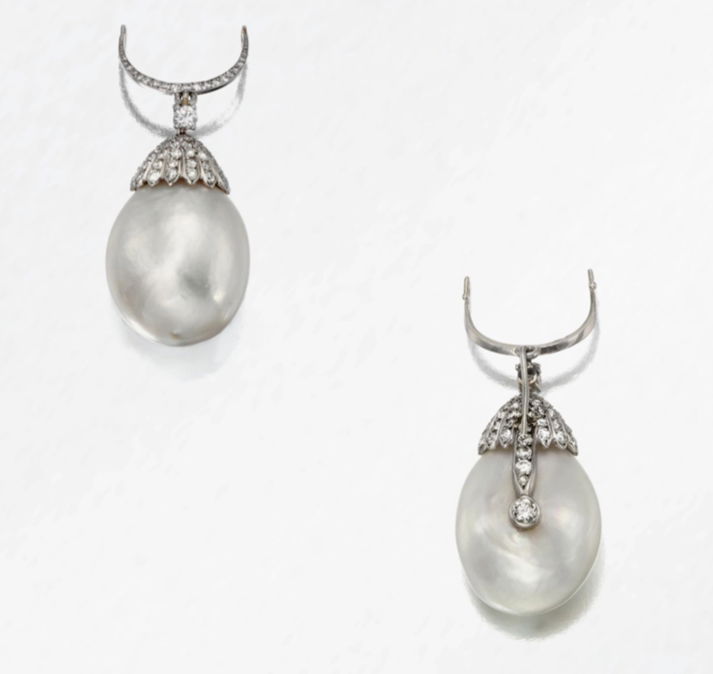
Wallis invariably wore a natural pearl and diamond pendant as a drop on the pearl necklace, and it was offered as lot 67 in the 1987 auction. The pendant had been re-set by Cartier in the early 1950s but it was originally purchased in 1948 from the New York jeweller, Olga Tritt. The sure and swift trajectory of Tritt’s career can be traced through contemporary publications, in March 1913, The Jewelers’ Circular reported that at an exhibition of the Women’s Industrial Exchange held at the Grand Central Palace, ‘…Miss Rosa Olga Tritt, a young Russian girl, who is working at her trade of jewelry and watchmaking in this city, gave an exhibition of her skill in watch repairing…The watch was formerly the property of a Russian nobleman’. Some thirty three years later, in June 1946, The American Horologist and Jeweler noted that, ‘Olga Tritt, one of America’s leading woman gem authorities and jewel designers, left for London today via Pan American World Airways…”This is my first trip in seven years,” said Miss Tritt who, prior to the war, averaged two trips abroad, each year. She will be available for interview at the Ritz Hotel, London’.
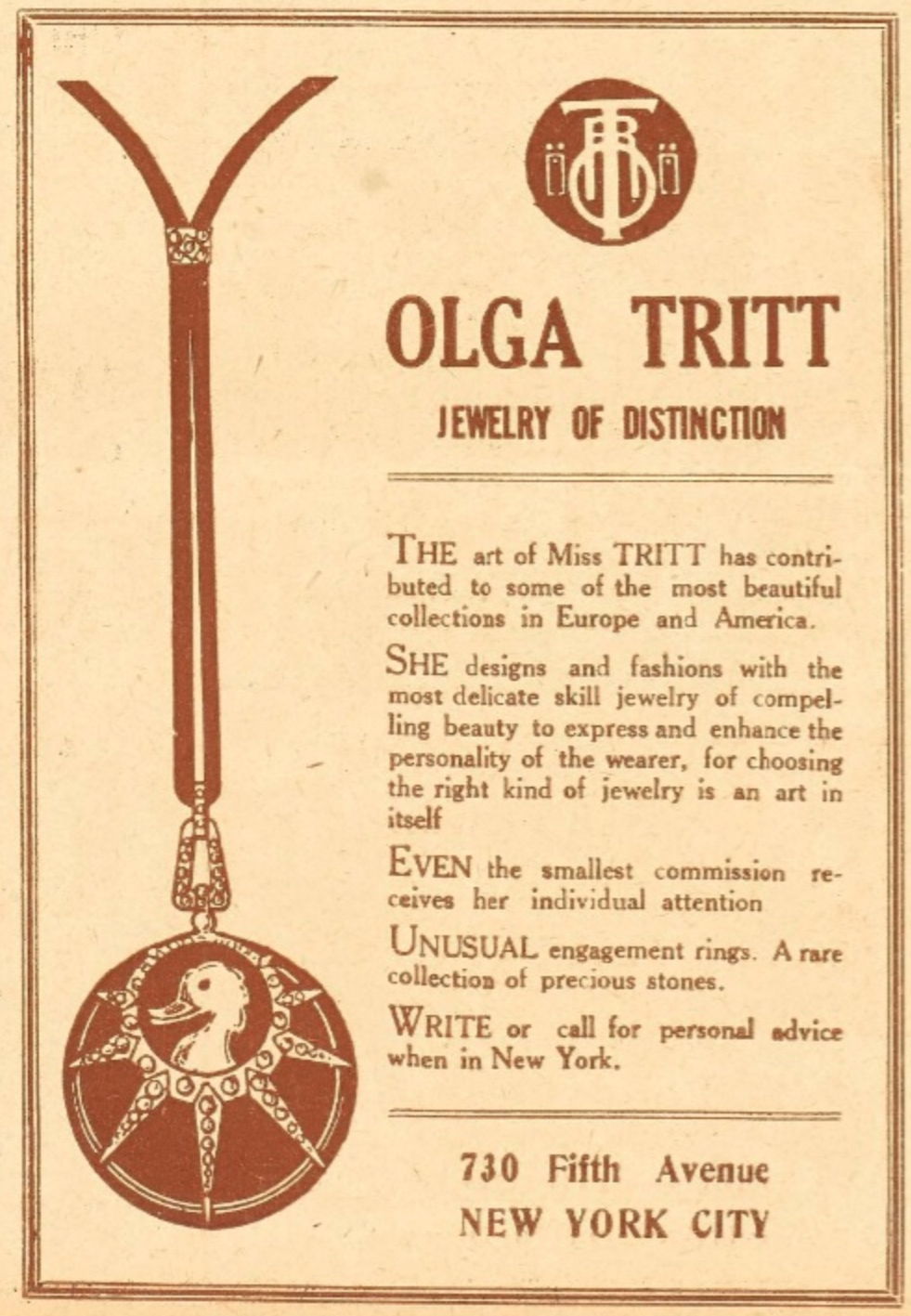
Prior to the Russian Revolution, Olga had apprenticed as a watchmaker, and when the family settled in New York in the early years of the 20th century, Olga set herself up in business selling jewellery and providing dressmaking services. She initially focused on antique pieces but later developed her own range of jewels, many of which were set with coloured gemstones; she also had a reputation for natural pearls and made frequent trips to pearl fishing locations. In Radio Digest, September 1931, Olga was quoted, ‘I think one of the things I love most in my work is when I go to the distant pearl fisheries myself, to find the treasures of my art…my favorite is the black pearl. I don’t know of any gem with which nature has been so sparing in quantity and so generous in beauty’.
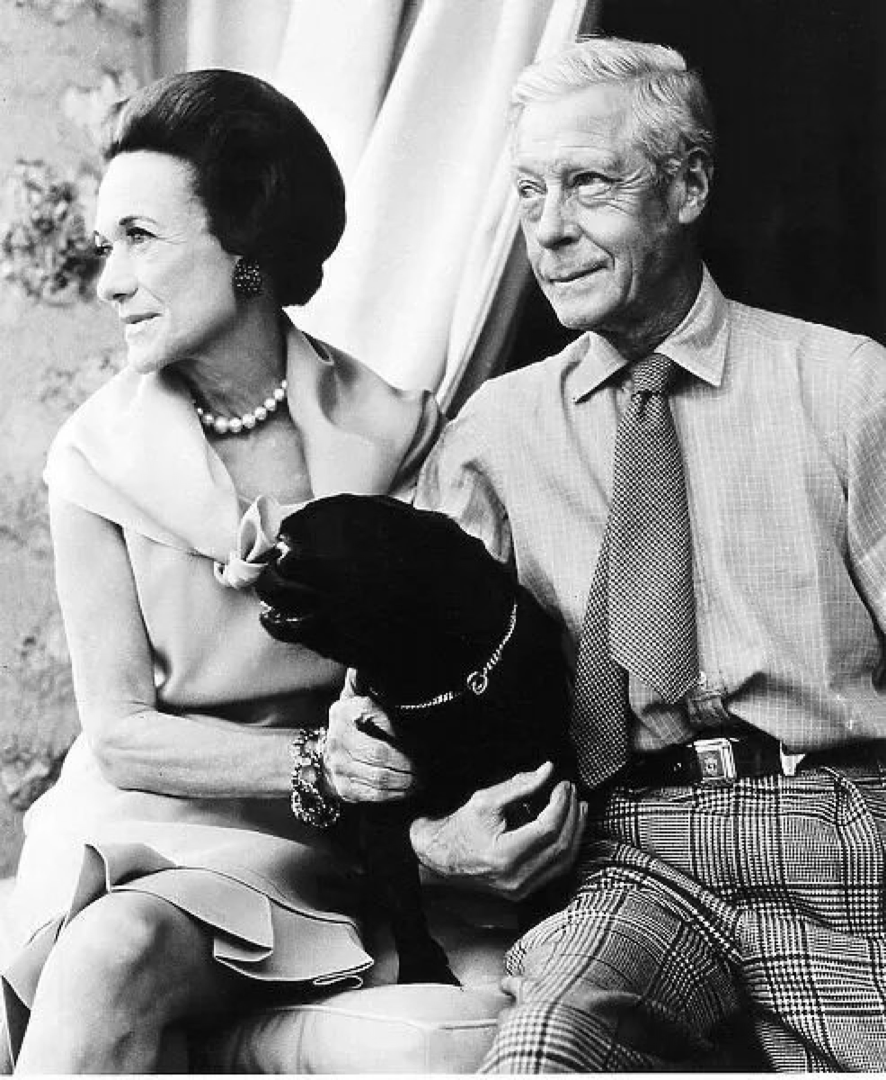
In the 1987 auction the Duchess of Windsor’s string of natural pearls and her pearl and diamond pendant were bought by Calvin Klein for his wife Kelly, the couple had married in September of the previous year in Rome.
As Kelly Klein was to later say, ‘Pearls, in my mind, are different from diamonds or gold. They are warm, mysterious, a small miracle created by nature’.
